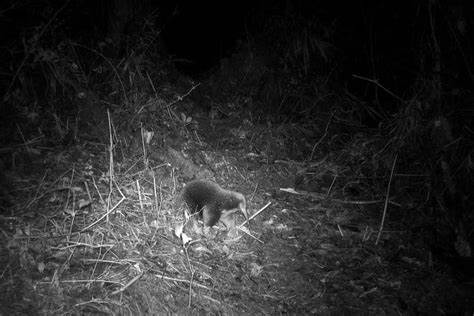
A scientific team led by researchers from the University of Oxford filmed a live specimen of an egg-laying mammal, considered extinct 60 years ago, in the Cyclops Mountains of Indonesia.
This is the Attenborough's long-beaked echidna, a critically endangered species named after British naturalist David Attenborough.
Scientifically named Zaglossus attenboroughi, this peculiar creature combines disparate characteristics such as a snout similar to that of an anteater, spines around the skin, similar to those of a hedgehog, and limbs comparable to those of a mole.
These animals with spikes, fur and beaks are classified as living fossils and their rediscovery occurred during the last day of a four-week expedition, when trail cameras captured the echidna for a few seconds among the forest undergrowth.
This member of the monotremes, a group of egg-laying mammals that diverged from the rest of the mammalian tree of life about 200 million years ago, was only scientifically recorded once in 1961.
Members of the group led by biologist James Kempton worked in collaboration with the local Yongsu Sapari village to explore the remote terrain of northeastern Papua, where the creature is embedded in local culture.
According to tradition, conflicts are resolved by sending the disagreeing parties into the forest in search of the echidna, symbolizing the end of the problem and the return to harmonious relations.
The Attenborough long-beaked echidna could become a symbol of hope for the conservation of creatures like the platypus, the only mammals that lay their eggs.
The researchers also revealed new species of insects and frogs, healthy populations of tree kangaroos and birds of paradise, all of which underline the importance of ecosystem exploration and conservation. (Text and photo: PL)